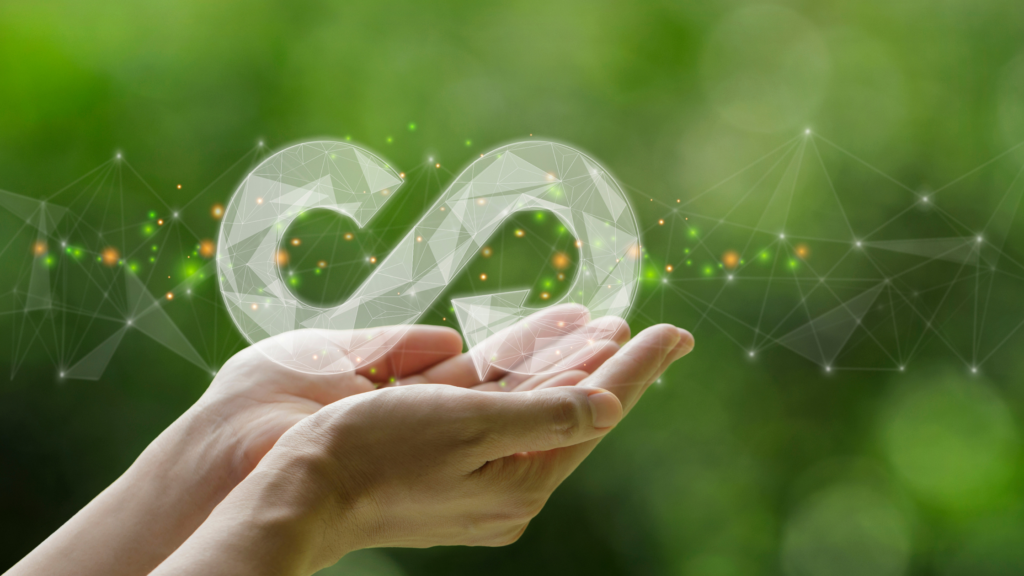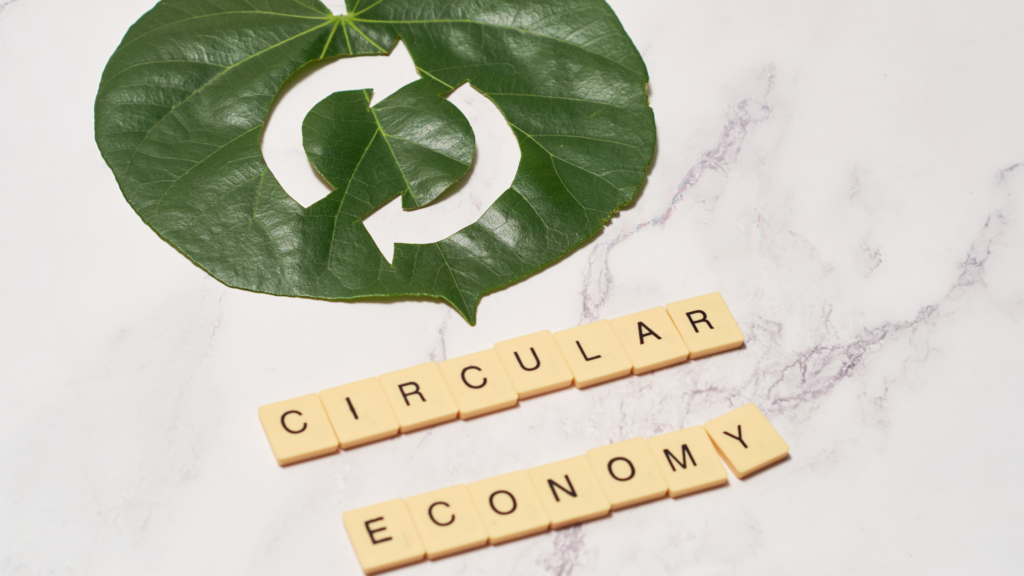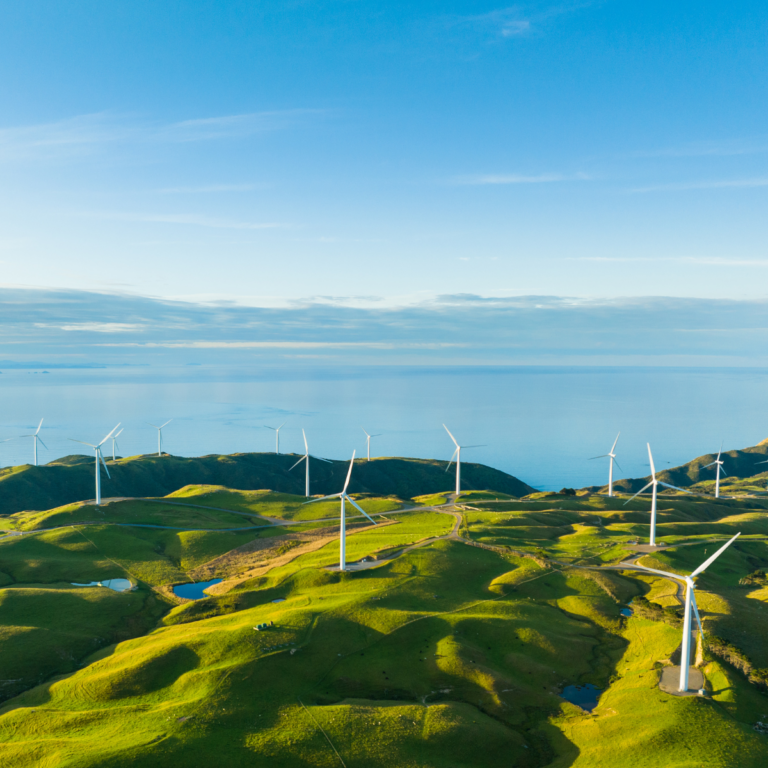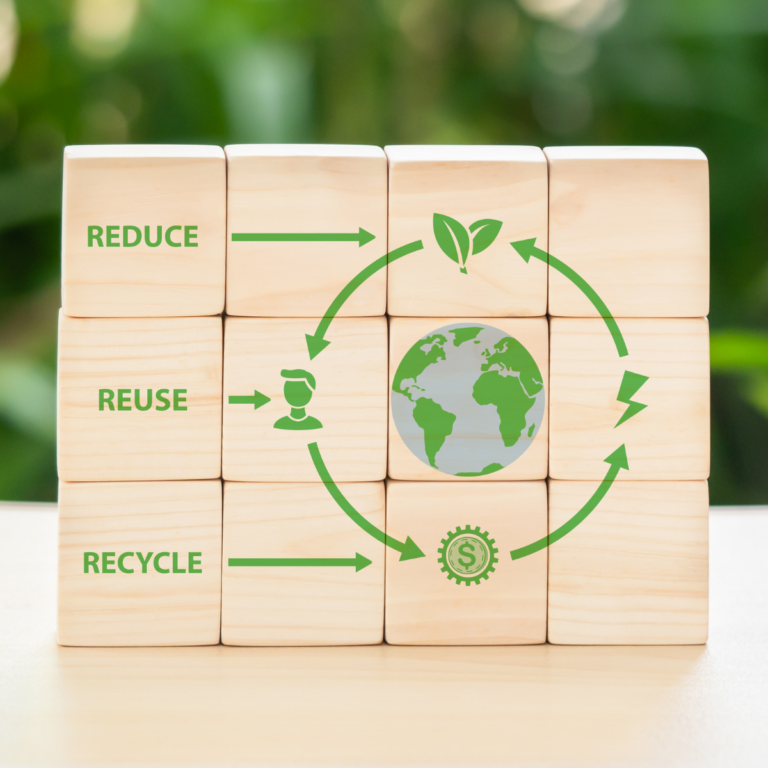What is the Circular Economy Action Plan?
With the rapidly escalating environmental issues and resource consumption worldwide, the concept of sustainability has become increasingly crucial. This is where the Circular Economy Action Plan comes into play, serving as a roadmap for the more efficient use of natural resources and the minimization of environmental impacts. But what exactly is the Circular Economy Action Plan, and why is it so important?
The Circular Economy Action Plan is an initiative launched by the European Union in 2020. This plan aims to minimize waste, use resources more efficiently, and extend the lifecycle of products by applying circularity principles in production and consumption processes. In contrast to the traditional linear economy model, which is dominated by a “take-make-dispose” approach, the circular economy emphasizes the reuse, repair, and recycling of products, ensuring that resources remain in the economy for as long as possible.
Implementing the circular economy model not only protects the environment but also contributes to economic growth. Increased resource efficiency leads to cost reductions and the creation of new job opportunities. In this context, the Circular Economy Action Plan plays a crucial role in achieving Europe’s sustainability goals.

Objectives of the Circular Economy Action Plan
The Circular Economy Action Plan aims to bring an innovative approach to our production and consumption processes, promoting sustainability, economic growth, and environmental responsibility. Here are its key objectives:
- Promoting Sustainable Product Design
The plan emphasizes designing products that are more durable, repairable, and recyclable. By considering sustainability from the outset, it aims to extend product lifespans and reduce waste. - Increasing Resource Efficiency
A central objective is to use resources more efficiently. This involves reducing material usage, reusing existing materials, and maximizing the value obtained from resources. - Reducing Waste Generation
By fostering a circular economy, the plan aims to significantly reduce the amount of waste produced. This is achieved through better product design, recycling initiatives, and encouraging the reuse of materials. - Supporting Innovation and Circular Business Models
The plan promotes innovation in business models that support circularity. For example, product-as-a-service models, where consumers lease products instead of owning them, can improve product maintenance and end-of-life recycling. - Creating Market Opportunities
Transitioning to a circular economy creates new market opportunities, leading to economic growth and job creation. Sustainable products and services are increasingly demanded by consumers, driving businesses to innovate. - Enhancing Consumer Awareness
Educating consumers about the benefits of a circular economy and sustainable consumption is another key objective. Informed consumers can make better choices that support sustainability. - Strengthening Global Leadership
The European Union aims to set an example in global sustainability efforts. By implementing and promoting the Circular Economy Action Plan, the EU seeks to establish a standard for other regions to follow.
The Circular Economy Action Plan provides a comprehensive framework for transitioning from a linear to a circular economic model, ensuring more efficient and sustainable use of resources. This plan aims to foster economic growth and innovation while increasing environmental responsibility.

What is the Action Plan?
The Circular Economy Action Plan is a strategic initiative by the European Union to transition towards a more sustainable and resource-efficient economy. It outlines measures to promote circularity in production and consumption, aiming to reduce waste, increase resource efficiency, and foster sustainable growth. The plan covers various sectors, including electronics, textiles, packaging, and construction, setting ambitious goals for product design, waste management, and recycling.
For a detailed overview of the action plan, you can visit the official document here.
Previous and Upcoming Actions and Initiatives
September – October 2023: Several initiatives on microplastics adopted, including REACH restriction on intentionally added microplastics and a proposal for a regulation on preventing pellet losses to reduce microplastics pollution.
May 2023: European Commission revised the circular economy monitoring framework.
22 March 2023: European Commission adopted proposals on green claims and the right to repair, including a directive on green claims and common rules promoting the repair of goods.
30 November 2022: Measures proposed in the circular economy action plan were adopted, including the revision of EU rules on packaging and packaging waste, and a policy framework for biobased, biodegradable, and compostable plastics.
5 April 2022: Proposals for revised EU measures to address pollution from large industrial installations were adopted, including the revision of the Industrial Emissions Directive and the European Pollutant Release and Transfer Register (E-PRTR).
30 March 2022: A package of measures proposed in the circular economy action plan was adopted, including the Sustainable Products Initiative, the proposal for the Ecodesign for Sustainable Products Regulation, the EU strategy for sustainable and circular textiles, a revised Construction Products Regulation, and a proposal for empowering consumers in the green transition.
17 November 2021: European Commission adopted a proposal for new rules on waste shipments.
28 October 2021: Proposal to update rules on persistent organic pollutants in waste adopted.
22 February 2021: Global Alliance on Circular Economy and Resource Efficiency (GACERE) launched.
10 December 2020: Proposal for a new regulation on sustainable batteries adopted, marking the first initiative under the new action plan.
11 March 2020: European Commission adopted the new circular economy action plan.
11 December 2019: European Commission adopted the European Green Deal.
December 2015: First circular economy action plan adopted by the European Commission. All 54 actions under this plan have been delivered or are being implemented.

Areas That Will Be Affected by the Circular Economy Action Plan
The Circular Economy Action Plan aims to reshape various sectors by promoting sustainable practices, efficient use of resources, and reducing environmental impacts. Here are the key areas that will be significantly impacted:
- Electronics and ICT
The plan targets the electronics and ICT sector to enhance the durability, repairability, and recyclability of devices. This includes setting standards for design, encouraging the use of recycled materials, and improving waste management for electronic products. - Batteries and Vehicles
With a focus on sustainable batteries, the plan aims to improve the lifecycle management of batteries used in vehicles and electronic devices. This includes regulations on the sourcing of raw materials, extending battery life, and enhancing recycling processes. - Packaging
Packaging is a major focus, with initiatives aimed at reducing waste, increasing the use of recyclable materials, and promoting reusable packaging solutions. The plan encourages the development of sustainable packaging designs and efficient waste management systems. - Plastics
The plan addresses plastic pollution by promoting the use of biobased, biodegradable, and compostable plastics. It includes measures to reduce single-use plastics and enhance the recyclability of plastic products. - Textiles
The textiles sector is targeted to improve sustainability through better design, production, and disposal practices. This involves encouraging the use of sustainable materials, enhancing the durability of textile products, and promoting recycling and reuse. - Construction and Buildings
The construction sector will see significant changes with the promotion of sustainable building materials, improved energy efficiency, and better waste management practices. The plan aims to reduce the environmental footprint of construction activities and enhance the lifecycle management of buildings. - Food, Water, and Nutrients
The plan promotes sustainable agricultural practices, reducing food waste, and improving the efficiency of water and nutrient use. It includes initiatives to enhance the sustainability of food production and distribution systems. - Consumer Goods
Consumer goods, including furniture and household items, are targeted for better design, promoting repairability, durability, and recyclability. The plan encourages consumers to adopt sustainable consumption habits.
By targeting these key areas, the Circular Economy Action Plan aims to create a more sustainable and resilient economy, reducing environmental impacts and fostering innovation and growth in various sectors.

European Green Deal
The European Green Deal, adopted by the European Commission in December 2019, is a comprehensive strategy aimed at making the European Union climate-neutral by 2050. This plan seeks to balance economic growth with environmental sustainability and aims to implement significant changes across various sectors. The Green Deal focuses on increasing energy efficiency, promoting renewable energy sources, and reducing carbon emissions while also supporting the adoption of circular economy principles.
The European Green Deal not only aims to provide environmental benefits but also to stimulate economic growth and employment. Investments in sustainable agriculture, clean energy, green buildings, and circular economy practices are expected to deliver long-term economic and social benefits.
Ecodesign for Sustainable Products Regulation (ESPR)
ESPR is one of the key regulations developed under the framework of the European Green Deal. This regulation aims to reduce the environmental impacts of products from the design stage and to raise sustainability standards.
For more details, you can visit our Ecodesign for Sustainable Products Regulation blog post.
sqanit’s Digital Product Passport Solution
sqanit, a Munich-based technology innovator, provides an exceptional Digital Product Passport (DPP+) experience through its advanced Product Lifecycle Experience (PLX) Platform.
This platform enables companies to optimize the total lifecycle value of their products while enhancing service and after-sales experiences associated with their physical products.
By doing so, sqanit supports businesses in achieving their sustainability objectives while ensuring compliance with the Ecodesign for Sustainable Products Regulation (ESPR) and the EU Circular Economy Action Plan.

If you would like to learn more about Digital Product Passports and explore the opportunities this innovative solution offers, please fill out this form, and we will get in touch with you.
Beyond the Digital Product Passport, sqanit offers a range of features designed to enrich the user experience and meet evolving customer needs.
Key offerings include:
- AI-Powered Self-Service Options: Allow users to quickly find answers to their queries.
- File Management: Facilitates the organization and storage of user manuals and other essential documents.
- Service Communication: Features chat and ticketing systems that provide users with instant support.
- Augmented Reality (AR) Supported Remote Assistance: Offers visual guidance to help users navigate and resolve complex issues.
Moreover, users can report problems by creating tickets with sqanit and receive direct assistance through video calls. These functionalities enhance customer satisfaction by ensuring a seamless experience and improving service quality for companies.
Digital Product Passports are crucial for promoting sustainability and transparency. With the solutions provided by sqanit, businesses can effectively manage product information while delivering an outstanding customer experience. This approach aims to foster more conscious consumption habits, contributing to a sustainable future.
For more information, you can visit our Digital Product Passports blog post.

General Summary of Circular Economy Action Plan
The European Green Deal plays a critical role in achieving Europe’s environmental sustainability and economic growth goals. Innovative solutions like the Ecodesign for Sustainable Products Regulation and Digital Product Passport help elevate sustainability standards and implement circular economy principles. sqanit supports companies in reaching these goals with its solutions, contributing significantly to a greener future.
If you would like to learn more about our Digital Product Passport (DPP) solutions and the possibilities offered by the sqanit platform, our team would be delighted to assist you. Contact us to maximize the lifecycle of your products, achieve your sustainability targets, and ensure compliance with future regulations.
Contact us at: sales@sqanit.com
We are here to answer your questions and provide you with tailored solutions!
This article is for informational purposes only and does not constitute legal advice. As sqanit, no liability is accepted for any actions taken based on the information provided herein. Readers are encouraged to consult with qualified professionals for specific advice tailored to their individual circumstances.





